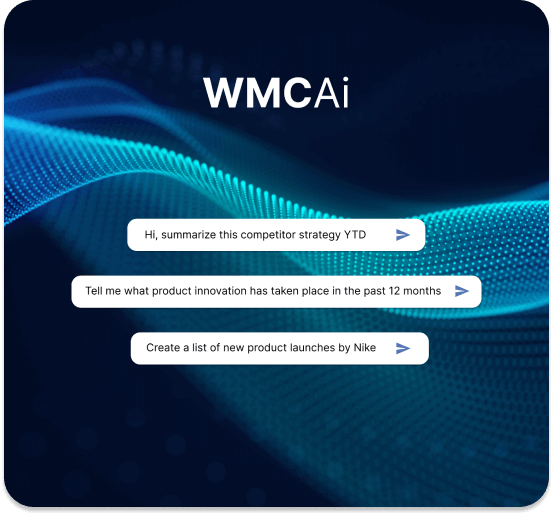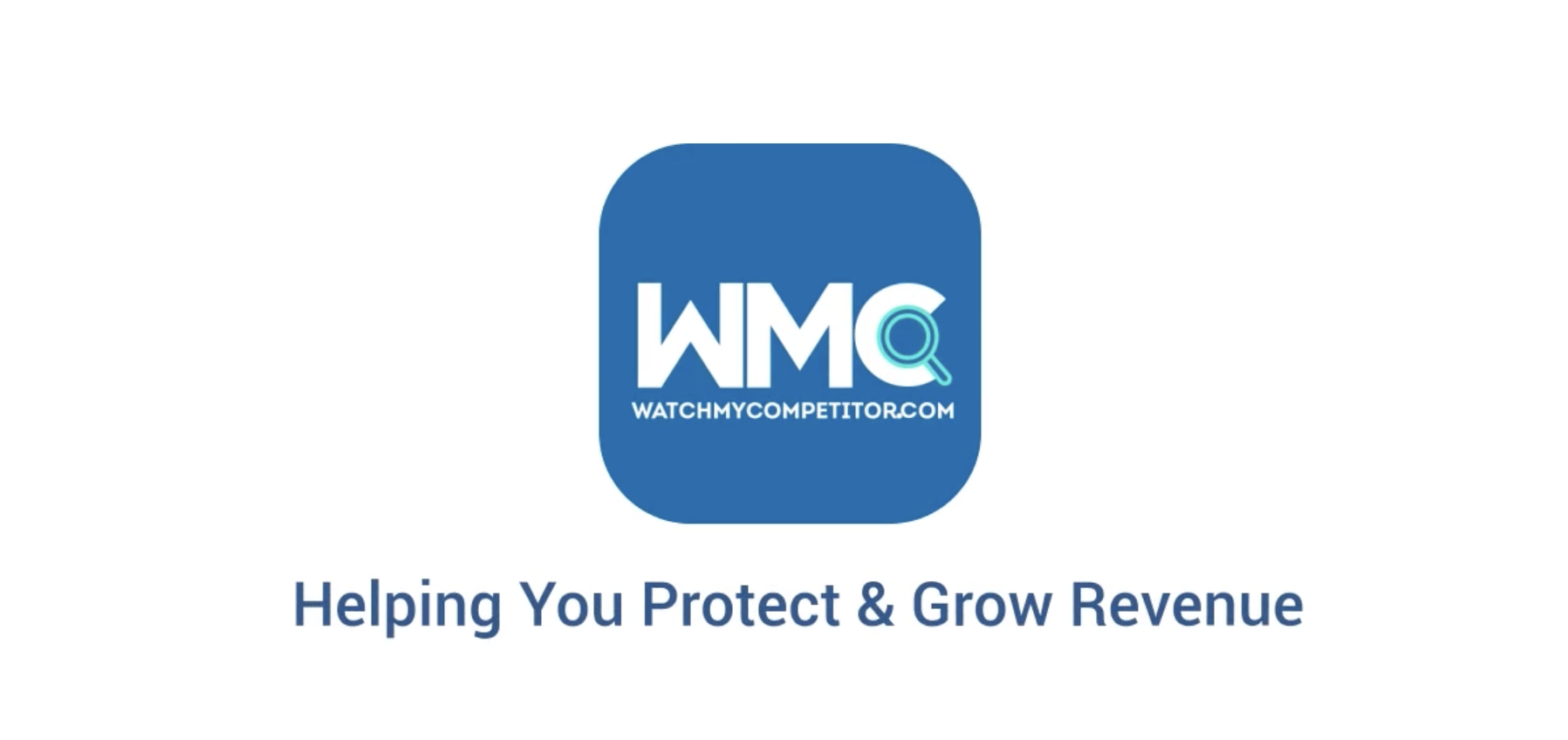A competitor’s website contains a wealth of information on pricing, product, services, values, promotions, marketing and more.
It can reveal industry trends for digital experiences, highlighting what good and bad look like. Or highlight the key trends that are being discussed through various forms of content.
On average, a company redesigns their website every two to three years. But smaller changes, particularly to content, can take place daily. It could be a subtle change to landing page copy, changes to listed pricing, a new blog post, news announcing a new hire or even the addition or removal of a page.
Every tweak – big or small – points is the result of a decision that, collectively, provides insights into your competitor’s strategies – valuable intelligence you can use to inform your own strategies and decisions.
Monitoring these changes is therefore vital in competitive markets. 90% of Fortune 500 companies are actively involved in monitoring their competitors and building intelligence about their strategies and tactics.
In this article, we’ll offer a clear definition of what is website monitoring and explore some of the benefits for using it. We’ll also offer a step-by-step guide for using it for your business.

What Is Website Monitoring?
Website monitoring is the process of keeping a close watch on your competitors’ online presence. It involves staying updated on any changes they make to their websites.
This can include changes to design, structure or messaging, pages being added or removed, pricing and product description tweaks and blog and news content.
Traditionally, this would’ve involved manually checking a competitor’s website and logging content in order to identify what had changed. Today, competitor intelligence software automates this process, tracking and alerting you to any changes.
By analysing the data you gather through website monitoring, you can gain insights into your competitors’ strategies. This can help you make smarter strategic decisions of your own, improving your websites and proposition to be competitive or stay ahead in your market.
Why Do Businesses Conduct Website Monitoring?
Now that we have a basic understanding as to what is website monitoring, we can now explore its purpose within a commercial setting. Website monitoring isn’t just a tech-savvy trend – it’s a strategic advantage. It addresses critical challenges businesses face in the digital arena, giving them a way to outsmart their competition.
We have already covered in-depth the advantages and disadvantages of website monitoring in a previous article. But here are some of the core benefits of website monitoring and the challenges it can help you overcome:
Competitive insights
To outmanoeuvre your competitors, you need a clear picture of what moves they’re making and why. This isn’t easy due to a lack of visibility into competitors’ actions. This can result in blind spots in your strategy, leading to missed opportunities, uninformed decisions and a reduced ability to respond effectively to market shifts.
How website monitoring helps: By meticulously tracking competitors’ website changes, you can gain clarity on their strategies and tactics in real-time. This informed perspective empowers confident, well-aligned decision-making, ensuring you don’t get left behind.
Strategic agility
It’s easy to be caught off-guard by sudden changes in the market. If you don’t know about a change in approach by one of your competitors, it can make you reactive rather than proactive. Depending on the nature and impact of their change, you might be left playing catch up to stop customers from jumping ship. It can also leave you feeling overwhelmed if you’re struggling to keep up with changes across your competitive landscape.
How website monitoring helps: By providing immediate updates on competitor activities, website monitoring equips you with the agility to adapt and seize emerging opportunities. By responding faster, you can be proactive in the market to protect or even enhance your position.
Enhanced user experience
Your website’s user experience can have a big impact on repeat visits and sales. But it isn’t always easy to understand what resonates with users without data and insights. While tracking user activity on your own site will help you identify where things are and aren’t working, it doesn’t always highlight gaps in your strategy.
How website monitoring helps: By monitoring competitor websites, you can gain a better understanding of the approach they’re taking and draw conclusions about what visitors are interacting with. It
Content strategy refinement
Content has become one of the most valuable routes to market for businesses across a number of sectors, with blogs, videos and social media posts all offering a way to connect with customers. However, it can also be a source of frustration, not knowing what to cover, how and how often. A poor content marketing strategy can have a big impact on revenue if your competitors do it better.
How website monitoring helps: By analysing your competitors’ content successes (and failures), you can gain insights into their strategies and market trends, enabling the creation of captivating content aligned with audience interests.
SEO & keyword insights
A well-optimised website can have a big impact on search engine results – which can subsequently make a big difference to clicks and conversions. Deciphering ever-evolving search algorithms is complex. If your competitors are out-ranking you and you don’t know why, it could be time to pay closer attention to their strategies.
.
How website monitoring helps: By tracking the data that’s available online, you can better understand your competitors’ SEO tactics. This can give you insights for refining your own strategies and lead to improved search engine visibility.
Innovation inspiration
A strong website provides a great user experience and helps a business to stand out from its competitors. If your site is feeling a bit tired and you’re concerned about losing customers, it’s not always easy to know how to improve it.
How website monitoring helps: By observing your competitors’ websites, offerings and features, you could find some useful inspiration that leads to improvements on your own site. Every time they make a change to their site, it’s an opportunity to learn.
How Do They Conduct Website Monitoring?
Conducting website monitoring is like peering through a digital magnifying glass. It reveals your competitors’ tactics and strategies. To embark on this journey successfully, consider these practical steps and insights:
1) Use a competitive intelligence platform
Choose a competitive intelligence platform that suits your needs. Look for user-friendly interfaces, data accuracy, the ability to integrate with your existing communication software and extras such as market analysis.
Most tools serve up raw data, which can leave you with a lot of heavy lifting to do. If the CI tool curates the data for you, this can be a big time-saver and make website monitoring almost effortless. For more information about choosing the right website monitoring tool, please read this article.
2) Identify your competitors
Familiarise yourself with your market. You’ll instinctively know who your primary (direct) competitors are but what about the emerging players in your market or businesses in other markets who have the potential to steal customers, even with a different type of product?
You might also find some value in monitoring the websites of businesses in a similar but non-competitive market, as their strategies can provide inspiration for yours.
3) Define your goals
Be clear about what you’re trying to achieve and how you’ll measure the success of your website monitoring investment. It works best as an ongoing activity but securing the budget for that only happens if you can prove its worth. Consider what metrics you intend to track and what constitutes success.
4) Clarify how you’ll use the insights
Until you’ve started website monitoring, it’s hard to know what insights you’ll gain or what opportunities there are to improve your own site. But given you’ll be tracking things like content, messaging, pricing, product and service features and user experience, it’s worth having a plan in mind for how you intend to act upon what you learn. The faster you act, the greater the opportunity you have to protect your revenue and position.
5) Integrate website monitoring into a broader strategy
For many organisations, website monitoring forms part of a wider competitive intelligence strategy. As well as tracking websites, there is scope to monitor competitor activity across all digital touch points in real-time. This can provide valuable insights that drive decision-making at a strategic and tactical level, across all departments of your organisation.
FAQs Regarding What Is Website Monitoring
What is website monitoring?
Website monitoring involves keeping a close watch on your competitors’ online activities and tracking any changes they make to their websites.
Is website monitoring only about tracking changes?
No, it’s about understanding the reasons behind changes, analysing their impact and using that knowledge strategically.
How often should I monitor competitor websites?
It depends on your goals and the pace of your industry. Real-time or periodic monitoring can both be effective.
Is website monitoring a one-time thing?
No, it’s an ongoing process. The digital landscape changes and your competitors’ moves evolve, so continuous monitoring is valuable.
Is website monitoring only for big businesses?
No, businesses of all sizes can benefit from website monitoring. It helps level the playing field and stay competitive.








